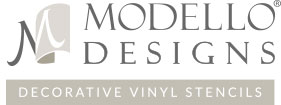Painting & Stenciling Designs with Interference Colors
A royal wall treatment that features delicate peacock feathers highlighted with interference colorants over a textured metallic plaster. When you want to go for the glow....
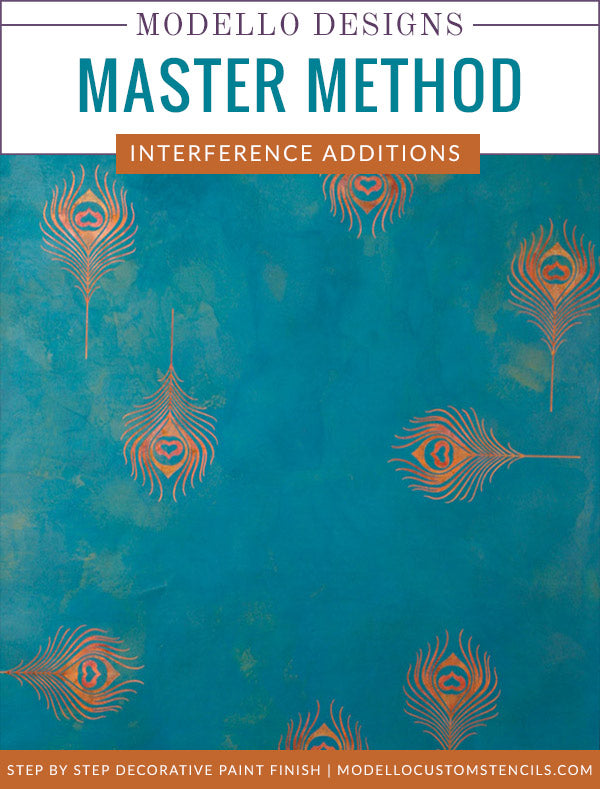
- Modello Pronto! Nouveau Feather (4mil Dimension): Contact Modello® Stencils customer service to order this design.
Faux Effects International® Products: Order via our Affiliate Link Here
- Lusterstone: Peacock Blue, Mustard Seed, Emerald Ice
- Palette Deco: Gold, Bronze
- Antique Mahogany Stain and Seal
- Aquacreme
- Aquaglaze
- Aquacolor Hi-Lite Colors: Violet, Green, Blue
Tools: Order via Royal Design Studio Here
- Venetian Trowel
- Japan Scrapers
- Plastic or Soft Rubber Trowel
- Cheesecloth
- Stencil Brushes
Basecoat: Black
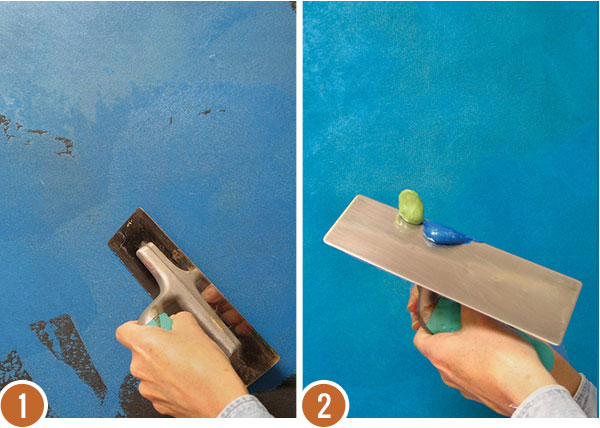
Step 1: Trowel a skim/skip layer of Peacock Blue Lusterstone over the entire surface in a “thick and thin” fashion, covering the black background completely. Change the direction of your hand and pressure on the trowel often for a nice organic finish. Let dry.
Step 2: Mix a custom green color with the following recipe: Combine 3 C. Mustard Seed with 1C. Emerald Ice. Thin this mixture with about 10% Aquacreme to create more translucency. Add the same amount of Aquacreme to some Peacock Blue also. Double-load your trowel with both colors, using less green than blue.
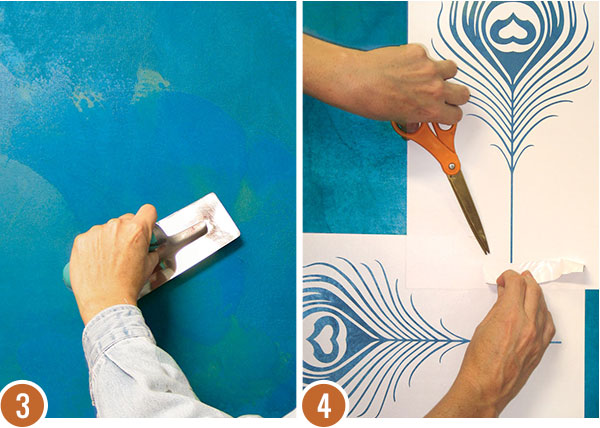
Step 3: Trowel over the previous layer, working your trowel quickly in different directions to blend the colors slightly as you go. Alternatively, you could work “wet on wet” by layering the colors immediately after each other.
Step 4: Lay out the Modello® patterns. For an interesting option to a static, vertical arrangement, try mixing it up a little. Here, two patterns are place perpendicularly. Simply cut off the excess masking material where it happens to overlap.
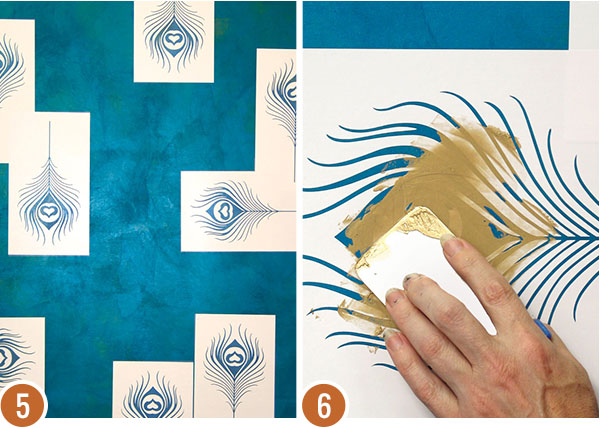
Step 5: This wider shot shows more of the arrangement. Of course over a larger wall space, you could spread the motifs out even more.
Step 6: To create a nice rich gold color, mix some Palette Deco to the following recipe: ¾ C. Gold and 1/8 C. Bronze. Use a Japan Scraper held at a shallow, flat angle to the surface to apply the color mix through the Modello.
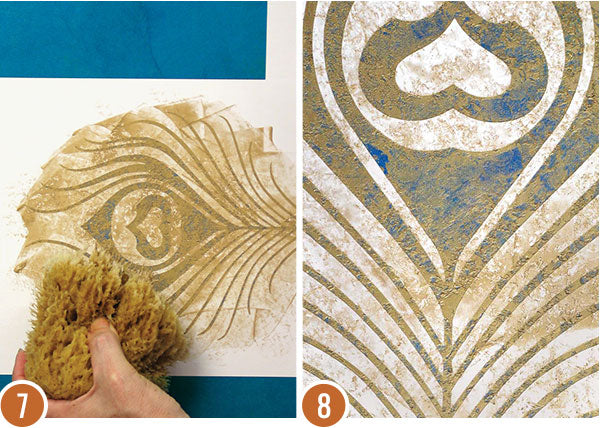
Step 7: Immediately hit the Palette Deco with a damp sea sponge to “print in” some texture. Palette Deco dries very quickly, so you will want to do this to each feather before moving on. Clean your sponge often.
Step 8: This detail show the texture that you are trying to achieve with the sponge. It is OK if some of the blue background shows through.
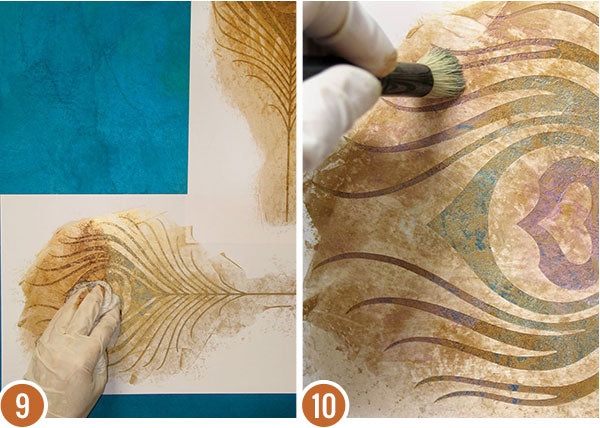
Step 9: This some Antique Mahogany Stain and Seal with about 20% Aquaglaze to extend it’s open time and increase translucency. Rub over and into the texture surface with cheesecloth. Alternatively, you could trowel it on and remove just the excess with the cheesecloth. Let dry.
Step 10: Use stencil brushes to brush on the various Hi-Lite (interference) colors-Violet, Green and Blue. Apply them heavily and somewhat randomly for the most dramatic effect. Allow all to dry completely before removing the Modello® stencils slowly to keep the Palette Deco bonded to the Lusterstone surface.
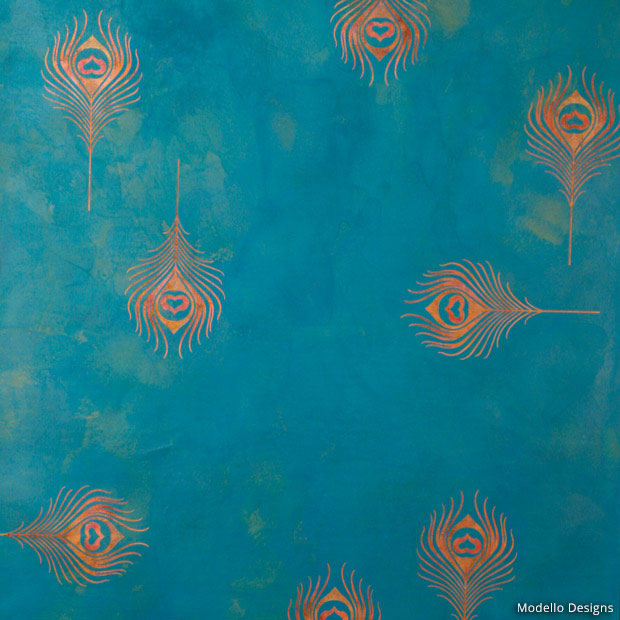
Interference Colors: Interference colors are unique in that they provide a color “flip” when viewed at different angles-changing from a bright opalescent color to the colors compliment, depending on your point-of-view. The effect will be most dramatic over darker colors.

